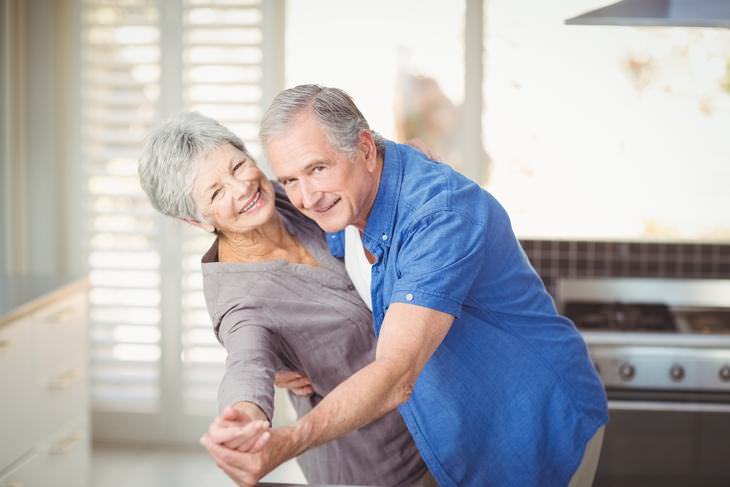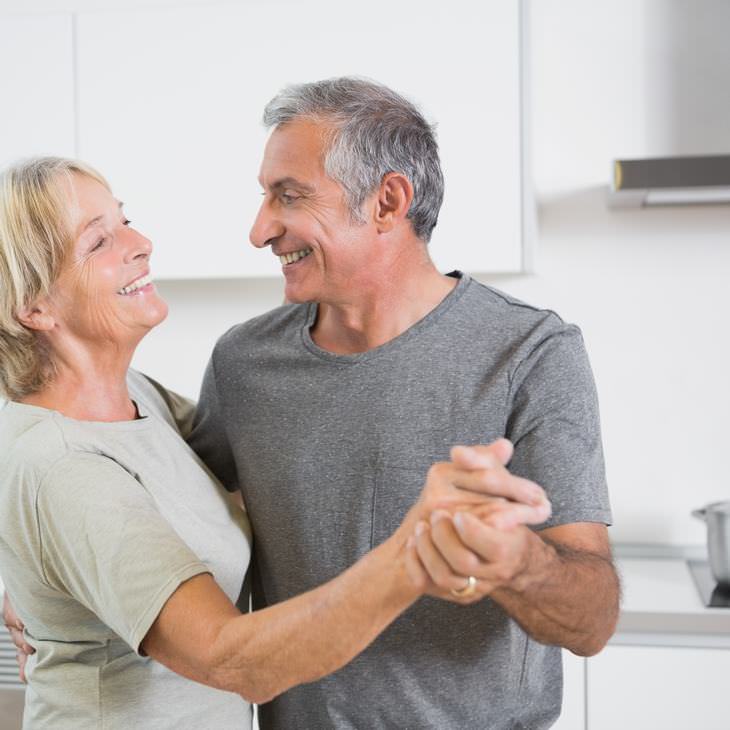Dancing Can Reverse Signs of Aging
Dance has long been a form of expression,
celebration and has also been shown to literally shake the stress of the
day away. Regardless of whether you took dance lessons growing up, or
have two left feet, we can all admit that letting loose and dancing the
night away feels good. Yet dance can do so much more for us, in fact, it
has been found that the mental benefits may make it the number one
activity for protecting and strengthening your brain.
Dancing and Your Brain
Research is constantly being done on the aging brain and how to combat,
prevent and treat age-related diseases such as Alzheimer's, Dementia and
Parkinson's disease. Exercise has long been shown to have an impact on
brain health, but scientists have discovered that dance, with
coordinated movement and required stamina, may be the best type of
exercise for your brain for several reasons:


1. Constant Learning
A study conducted by Dr. Kathrin Rehfeld at the German Center for
Neurodegenerative Diseases compared various groups of elderly people who
were given specific exercise routines for 18 months. Some groups were
assigned endurance and flexibility training such as walking or cycling,
and one group was given weekly dance lessons.
Every week they were challenged with something new, be it a new genre of
dance, a new step, or a new routine. It was found that all the groups
experienced an increase in the hippocampus center of the brain - an area
that is particularly vulnerable to age-related decline and diseases -
though the dance group experienced a noticeable difference. Dr. Rehfeld
explained that the most challenging aspect for the group was to recall
the routines under the pressure of time, and without any cues from the
instructor.
2. Coordination and Balance
Balance and coordination can be difficult, becoming even more
challenging as we age. The challenge with aging is that you become
increasingly dizzy, lose your balance and fall. As a result, you are
also more likely to experience a serious injury. But dancing trains and
improves all of these areas: Spins, turns, quick side-to-side and up and
down movements, train the areas of the brain and the inner ear to deal
with those quick changes and sharp movements. This helps you become less
dizzy from everyday movements, such as going up the stairs or getting
up and out of a chair.
In addition, dancing also helps strengthen a variety of muscles in your
feet, legs, and hips as well as your core, so that if you do lose your
balance, you are able to stop yourself from falling. Dancing teaches
coordination and muscle memory, so if you dance and practice routines,
you are nurturing and developing the brain-muscle connection and
neurons.
3. Improved Memory
We all would like to have better memory, but this is especially
pertinent for older adults. As we age our ability to remember and recall
names, dates, places, and facts declines. But dancing helps us connect
the mental (learning new steps and the order they come in) with the
physical (actually executing the routine). This results in memory
improvement and strengthened neuronal connections in the brain.


4. Music Stimulates Brain Activity
Scientists and researchers who study neurodegenerative diseases have
long discussed the profound impact that music has on the brain,
especially for those suffering from cognitive decline. Dance, not only
offers benefits of the physical practice itself but as it is accompanied
by music, this helps stimulate the reward centers of the brain in
combination with the sensory and the motor circuits that are activated
when you start dancing.
Furthermore, studies done on Parkinson's disease found that those who
practiced and learned dance, had an improved sense of balance and fell
less, they also experienced a slower rate of motor decline and an
overall slower progression of the disease.
5. Dancing Makes You Happy
Whatever the style, dancing gets you moving. This form of exercise is
fantastic for your heart, lungs, muscles, and joints and is a fun way to
burn calories. It also helps you shed stress. It also allows us to
connect with others, when we are at parties, for instance.